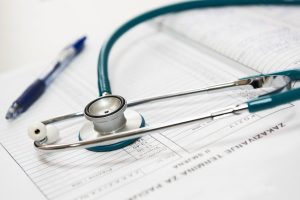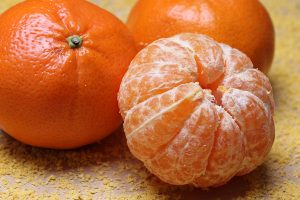Liposuction in Singapore: A Basic Guide, Benefits and Risks

A number of people think that “liposuction” is an operation that is administered merely to get thin. While this thinking is not completely wrong, there are several concerns that drive patients to mull over booking a liposuction appointment than most know. Yes, the sole purpose of liposuction is for getting rid of fats, but the reason why patients undergo the surgical process differs. There are also other things that a man or woman can benefit from a session or two of liposuction.
According to the experts in liposuction at Shens Clinic Singapore, topping the list of reasons for undergoing this fat banishing procedure is already mentioned—to reduce or zap away fats. These fats that we speak of here are called “stubborn fats.” These unwanted fats are those that stick to certain parts of the body, such as the following:
- Back
- Breast
- Buttocks
- Double chin
- Face
- Legs
- Neck
- Stomach
- Upper arms
- Thighs
Stubborn fats usually remain despite heavy dieting or exercise. The only way specific body parts can be free from the multiplication of fatty flesh is to suction the cell pockets where they are kept. Once this is done, the chance is minimal that the target part of the body which received liposuction will keep on packing and storing surplus fats. Aside from this, the body will look more aesthetically pleasing as the dissolved fat will also reshape its contour. You can say that levelling up your figure is an easy confidence booster. A well-defined body shape will definitely look good in clothes that fit in all the right places. This is another plus that patients can achieve from a course of liposuction.
With the latest methods in applying this procedure in Singapore using laser technology, collagen stimulation is another winning attribute on the list of liposuction advantages. The production of fresh collagen greatly improves the skin, making it appear smoother, suppler, and younger.
Aside from reasons relating to body enhancements, liposuction is recommended to medically manage health conditions like gynecomastia and lipoma. Gynecomastia is a medical disorder affecting men suffering from imbalanced levels of estrogen and testosterone. This disparity results to the enlargement of breast tissues. Another medical disorder, lipoma occurs when a tumour of fatty excess that forms and is lodged between the skin’s top layer and the muscle underneath it.
As we have enumerated the positive features that liposuction brings, it does not go on to say that it is without risks. Read on to know more.
Liposuction is a major operation.
Choosing a doctor that lacks knowledge and experience handle a round of liposuction could be fatal. Bear in mind that this is regarded as a surgical process—and a major one at that. Only licensed surgeons specialising in aesthetic and reconstructive operations and licensed by the Ministry of Health in Singapore may carry out liposuction procedures.
Because this is invasive and involves surgical methods, lipo can only be executed in a medical facility suited and equipped to handle it. These are the facilities where this surgery should be accomplished:
- A hospital
- An outpatient clinic for surgeries
- A surgeon’s clinic
Liposuction is administered in three different ways.
There are three types of liposuction:
- Traditional
- Laser-assisted
- Ultrasound-assisted (Vaser liposuction)
Fat elimination in the traditional way is implemented through these steps:
- A tiny cut is done on the skin’s target area. The cut reaches into the depth of the fat layer of fat.
- A liquid combination of local anaesthesia, epinephrine, and salt solution is then introduced into the fat cells using an injection.
- A cannula is then inserted and used to disintegrate the fats, followed by a syringe or a surgical vacuum to suck the cells of fats away.
Laser-assisted liposuction, or SmartLipo, is carried out by:
- Cutting through the small portions of flesh in the target area.
- Jabbing a liquid mix consisting a local anesthetic, epinephrine, and salt solution passing through the skin opening with an injection.
- Using laser fibre that is inserted into the flesh through the cuts made in order to reach the deposits of fatty tissues. The laser fibre then delivers heat to dislodge the fats, before vacuuming them out.
Ultrasound-assisted liposuction (UAL) aka Vaser liposuction is completed through this process:
- Tiny incisions are created in the flesh where the unwanted fats are stored.
- An emitter device is then utilised to deliver heat through the skin to get to the layer of adipose tissue and dissolve them. Another way is by introducing a thin tube through an injection into the skin layers and releasing the ultrasonic vibrations to release the fats.
- A cannula is then inserted and surgical vacuum is mobilised to draw away the fat from the body. A syringe may also be used for this step.
Liposuction can put your life at risk.
Risks that may happen in or subsequent to liposuction are:
- Allergic reactions to anaesthesia or a solution ingredient
- Bleeding (which in extreme cases can result to a shock)
- Blood coagulation or clotting
- Infection
Liposuction recovery will take some downtime.
The length of recovery following a liposuction treatment is highly influenced by:
- A patient’s age
- Body part/s that received where the fats were harvested from
- Quantity of removed fatty tissue
- Overall health status of the patient
- Method of used for the surgery
Basing on your state, the doctor may discharge you outright after the surgery or advise you to remain to be monitored for a bit. In some cases, a patient may even spend the night in the hospital. Complete recovery from this kind of operation can be anywhere from a couple of weeks or months.
Your body may experience different sensations as it heals, so it is crucial let your doctor know how you are progressing with your recovery. In case you feel or notice any disturbing side effects, do not delay contacting your doctor or heading on to the nearest medical facility to have yourself checked.






